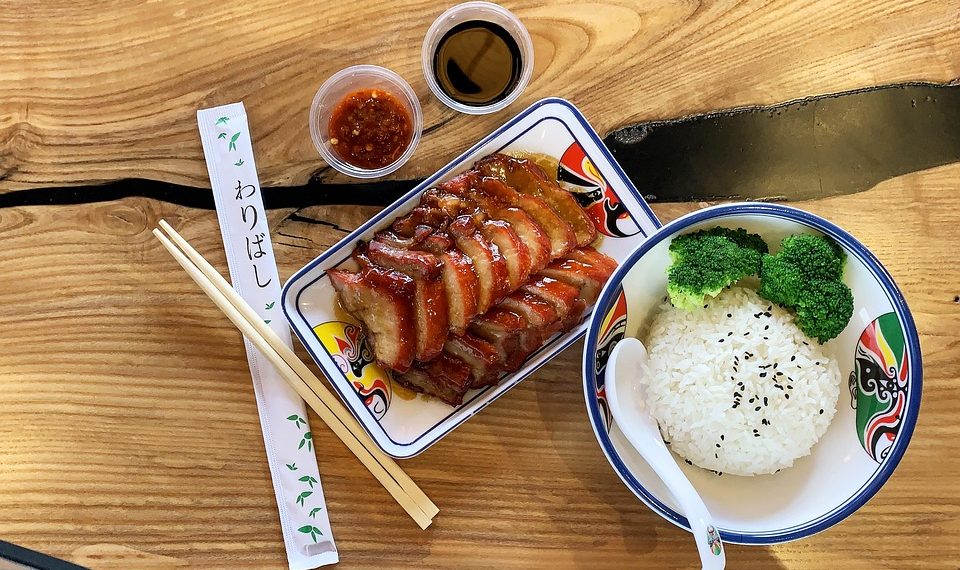Did you know that a simple grain could play a significant role in how efficiently your body burns calories? That’s right! Brown rice, often hailed as a healthier alternative to its white counterpart, has more to offer than just a nutty flavor and chewy texture. If you’re looking to rev up your metabolism naturally, brown rice might just be your new best friend. In this article, we’ll dive into five compelling ways brown rice can help boost your metabolism, along with some practical tips for incorporating it into your diet.
Contents
1. Rich in Fiber: The Metabolism Booster
One of the standout features of brown rice is its high fiber content. Unlike white rice, which is stripped of its bran and germ during processing, brown rice retains these components, making it a whole grain. Fiber is crucial for digestion and can help regulate your metabolism in several ways.
Why Fiber Matters
When you consume fiber, it slows down the digestion of carbohydrates, leading to a more gradual release of glucose into your bloodstream. This helps maintain steady energy levels and prevents those pesky blood sugar spikes and crashes that can derail your metabolism. Additionally, fiber-rich foods keep you feeling full longer, which can help curb overeating.
Personal Insight
I’ve noticed that on days when I include brown rice in my meals, I feel more satisfied and less likely to snack mindlessly. It’s almost like my body appreciates the steady energy it provides.
Caveats
While fiber is beneficial, it’s essential to increase your intake gradually. Too much fiber too quickly can lead to digestive discomfort. Aim for a balanced diet that includes a variety of fiber sources.
2. Low Glycemic Index: A Steady Energy Source
Another reason brown rice is a metabolism-friendly food is its low glycemic index (GI) compared to white rice. The GI is a measure of how quickly a food raises blood sugar levels. Foods with a low GI provide a slow and steady release of energy.
The Science Behind It
A study published in the American Journal of Clinical Nutrition highlighted that low-GI foods, like brown rice, can improve insulin sensitivity and help with weight management (Slabber et al., 2015). This is significant because better insulin sensitivity means your body can use glucose more effectively for energy rather than storing it as fat.
Practical Tip
Pair brown rice with protein and healthy fats for a balanced meal that keeps your energy levels stable. Think stir-fried veggies with chicken or tofu over a bed of brown rice.
3. Nutrient-Dense: Fueling Your Body
Brown rice is not just a source of carbohydrates; it’s also packed with essential nutrients that can support metabolic processes. It contains B vitamins, magnesium, and iron, all of which play a role in energy production and metabolism.
Nutritional Benefits
- B Vitamins: These vitamins, particularly B1 (thiamine) and B3 (niacin), are vital for converting carbohydrates into energy.
- Magnesium: This mineral helps regulate blood sugar levels and is involved in over 300 biochemical reactions in the body.
- Iron: Essential for oxygen transport, adequate iron levels can help prevent fatigue, keeping you energized for physical activity.
Reminder
While brown rice is nutritious, it’s essential to consume a variety of foods to ensure you’re getting a comprehensive array of nutrients. No single food can provide everything your body needs.
4. Promotes Healthy Gut Bacteria
Recent research suggests that the foods we eat can influence our gut microbiome, which plays a crucial role in metabolism. Brown rice is a prebiotic food, meaning it feeds the good bacteria in our gut.
The Gut-Brain Connection
A healthy gut microbiome can enhance metabolic health by improving digestion and reducing inflammation. Studies have shown that a balanced gut microbiome can even help regulate body weight and fat storage (Zhao et al., 2018).
How to Incorporate It
Consider adding brown rice to a variety of dishes, from salads to soups, to help nourish your gut bacteria. The more diverse your diet, the better your gut health is likely to be.
Caution
While brown rice is beneficial, some individuals may have sensitivities to grains. If you notice any adverse reactions, consult with a healthcare provider.
5. Supports Physical Activity and Recovery
If you’re active, brown rice can be an excellent addition to your post-workout meals. The complex carbohydrates it provides are ideal for replenishing glycogen stores after exercise, which is essential for recovery.
Why Recovery Matters
Engaging in regular physical activity boosts metabolism, but your body needs the right fuel to recover effectively. Consuming brown rice can help you bounce back faster, allowing for more consistent workouts and better results over time.
Personal Experience
After a long workout session, I often find myself craving brown rice with some veggies and a lean protein. It feels like the perfect way to refuel and prepare for the next round of activity.
Keep in Mind
Balance is key. While brown rice is a great source of carbohydrates, don’t forget to include proteins and fats in your post-workout meals for optimal recovery.
FAQs
1. Can I eat brown rice every day?
Yes, brown rice can be part of a healthy daily diet. However, balance it with other whole grains, fruits, vegetables, proteins, and healthy fats.
2. Is brown rice better than white rice for weight loss?
Brown rice is generally better for weight loss due to its higher fiber content and lower glycemic index, which can help keep you full longer and stabilize blood sugar levels.
3. How much brown rice should I eat?
A typical serving size is about 1/2 cup cooked. Adjust based on your dietary needs and activity level.
4. Are there any downsides to eating brown rice?
While brown rice is nutritious, it contains phytic acid, which can inhibit the absorption of certain minerals. Moderation is key, and diversifying your grain intake is advisable.
Conclusion
Incorporating brown rice into your diet can be a simple yet effective way to boost your metabolism naturally. From its high fiber content to its nutrient density, this whole grain offers a range of benefits that can support your overall health. Whether you’re looking to lose weight, maintain energy levels, or simply enjoy a delicious meal, brown rice is a versatile option that fits the bill.
So, the next time you’re at the grocery store, consider reaching for that bag of brown rice. Your metabolism might just thank you for it!
This article is for educational purposes only and is not a substitute for professional medical advice. Always consult a qualified healthcare provider before making changes to your health routine.
References
-
Slabber, M., et al. (2015). “The effects of low-glycemic index diets on metabolic health.” American Journal of Clinical Nutrition. https://academic.oup.com/ajcn/article/101/2/202/4579376
-
Zhao, L., et al. (2018). “Gut microbiota and metabolic syndrome.” Nature Reviews Endocrinology. https://www.nature.com/articles/s41574-018-0018-7
-
Mayo Clinic. (n.d.). “Brown Rice Nutrition Facts.” https://www.mayoclinic.org/healthy-lifestyle/nutrition-and-healthy-eating/in-depth/brown-rice/art-20045007
Get Your FREE Natural Health Guide!
Subscribe now and receive our exclusive ebook packed with natural health tips, practical wellness advice, and easy lifestyle changes — delivered straight to your inbox.















